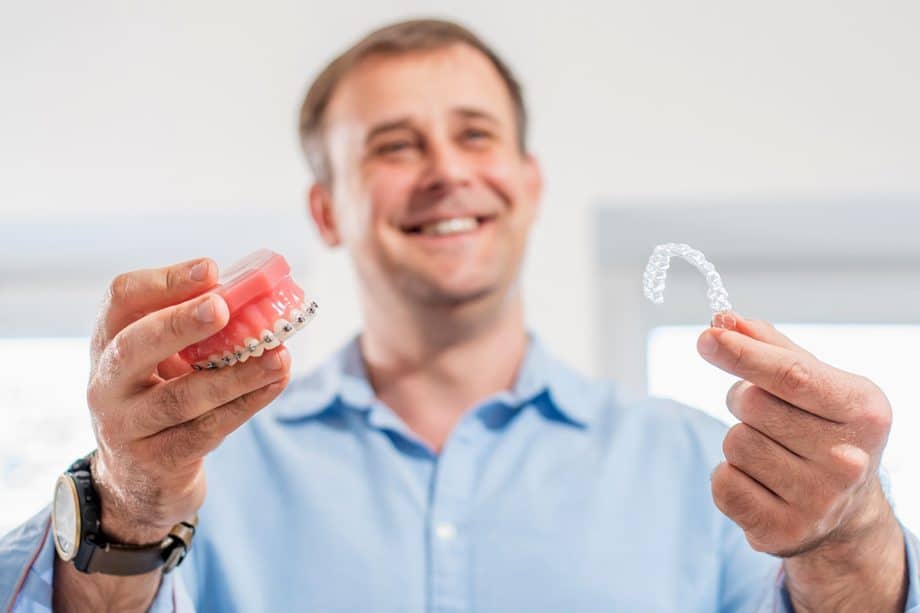Both braces and Invisalign can help you achieve the smile of your dreams. Your orthodontist can help you determine which system works best in your situation. This blog will explain Invisalign’s benefits and how they compare to traditional braces.
How Invisalign Works
The Invisalign system creates a graduated series of clear plastic aligners that shift your teeth over time. The aligners move a few teeth at a time, helping them reach their ideal positions.
To measure for your aligners, your orthodontist will take digital impressions using the iTero intraoral scanner. The scanner is a handheld wand that moves freely around your mouth, taking 3-D images.
The orthodontist will design your aligners using this data and send the information to the dental laboratory. You can begin your Invisalign journey when the aligners return from the lab.
Approximately every two weeks, your orthodontist will instruct you to change to the next aligner in the series. The aligners will improve your smile a little at a time until you have beautiful, lasting results.
Benefits of Invisalign Compared to Braces
Discreet
You can use Invisalign without drawing unwanted attention. Most people will not be able to tell you are wearing your aligners.
Comfortable
The trays are smooth medical-grade plastic free of sharp edges, brackets, and wires.
Faster Treatment
Invisalign's average treatment time is shorter than braces. Invisalign typically takes about 12 to 18 months, whereas braces take 18 months to three years.
Better Oral Hygiene
Invisalign comes out so you can thoroughly brush and floss. Practicing good oral hygiene with braces can be challenging.
Better Oral Health Outcomes
Braces patients sometimes encounter more problems with tooth decay and gum disease during and after their treatments. Invisalign's removable design maintains patients' oral health.
No Food Restrictions
Patients do not have to wear Invisalign trays while they eat, so they can eat what they like without worrying about damaging braces.
Equally Effective
Both Invisalign and braces produce beautiful, lasting results. Wearing a retainer after treatment is essential for both methods.
Situations Where Traditional Braces May Work Best
Younger Age
Invisalign is ideal for older teens and adults. Younger patients may not have all their permanent teeth. They may also have trouble remembering to wear their aligners for 22 hours daily.
Moderate to Severe Bite Issues
Invisalign can handle minor bite issues like overbite and underbite, but for more serious problems, braces may be your best choice.
Missing Teeth
Patients with missing teeth should know that braces work with their condition, while Invisalign may not.
Severe Malocclusion or Jaw Problems
Braces can correct severe orthodontic problems like advanced malocclusion or jaw malformation when combined with other orthodontic treatments.
Frequently Asked Questions About Invisalign
Is Invisalign covered by dental insurance?
Your dental insurance may pay for a portion of Invisalign treatment unless they consider it cosmetic.
How do you clean your aligners?
You can gently brush them with non-abrasive toothpaste or clear liquid soap. You can also use Invisalign's branded cleaning crystals. Be sure to follow your orthodontist's instructions to avoid damage.
Call Attleboro Pediatric Dentistry
Both Invisalign and braces are excellent forms of orthodontic treatment, but each system has specific benefits. Your orthodontist will help you choose the best system for your teeth. Please call our Attleboro, MA, office at 508-409-6160 to schedule a consultation.


